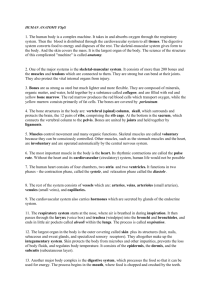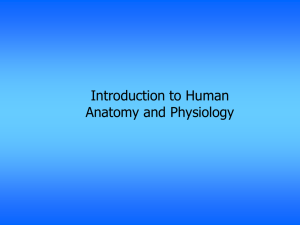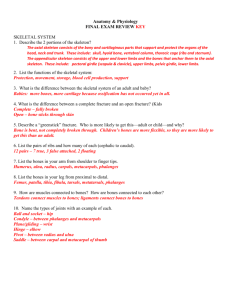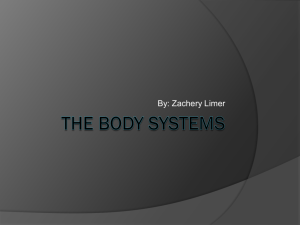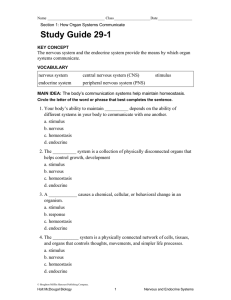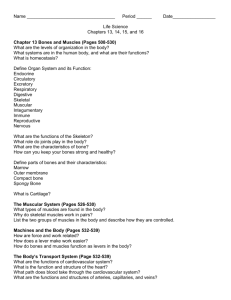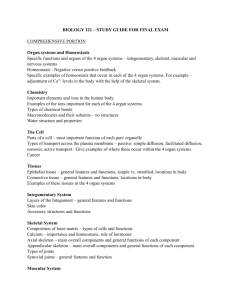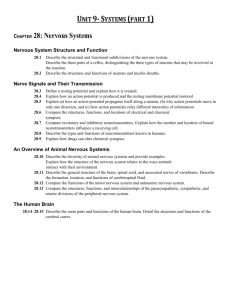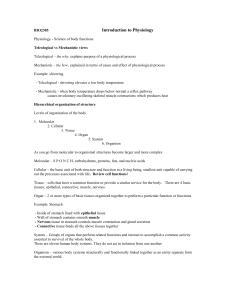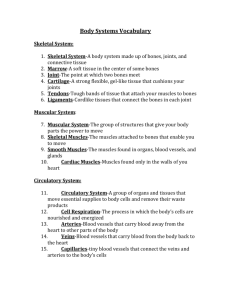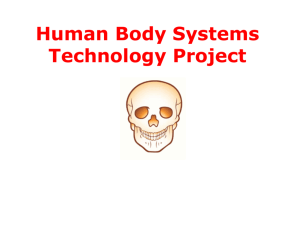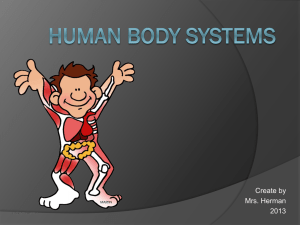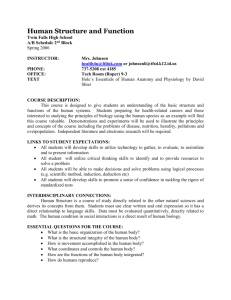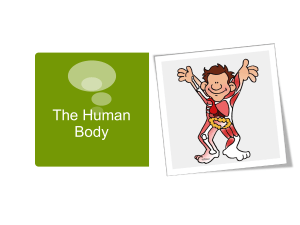Genetics: The Science of Heredity
advertisement
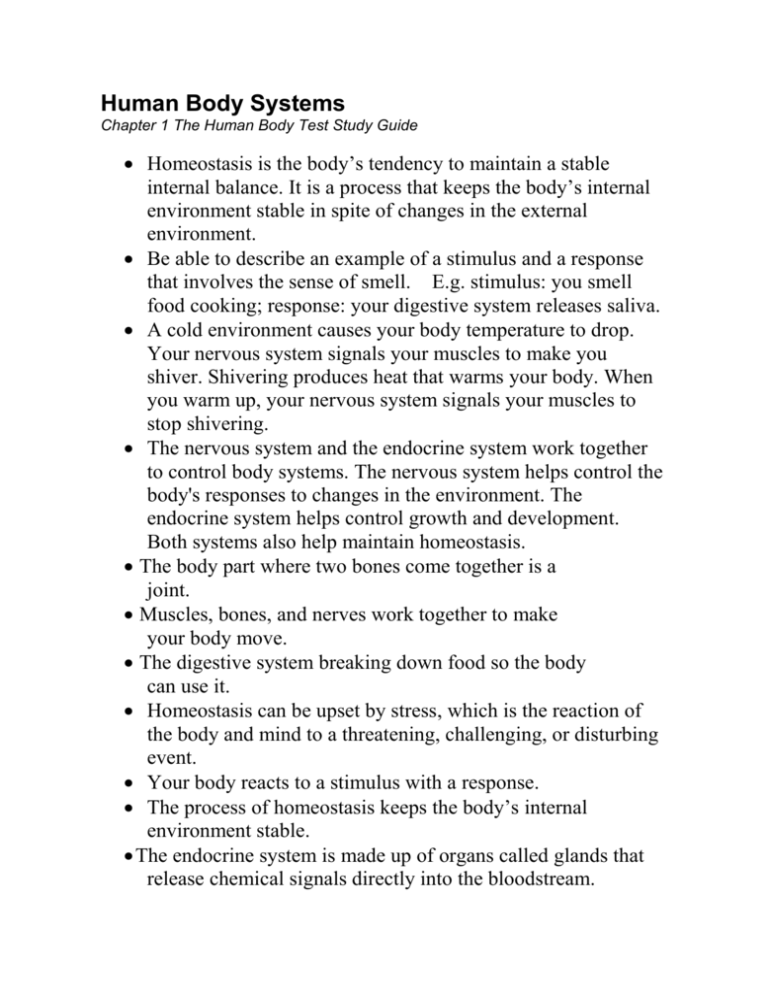
Human Body Systems Chapter 1 The Human Body Test Study Guide Homeostasis is the body’s tendency to maintain a stable internal balance. It is a process that keeps the body’s internal environment stable in spite of changes in the external environment. Be able to describe an example of a stimulus and a response that involves the sense of smell. E.g. stimulus: you smell food cooking; response: your digestive system releases saliva. A cold environment causes your body temperature to drop. Your nervous system signals your muscles to make you shiver. Shivering produces heat that warms your body. When you warm up, your nervous system signals your muscles to stop shivering. The nervous system and the endocrine system work together to control body systems. The nervous system helps control the body's responses to changes in the environment. The endocrine system helps control growth and development. Both systems also help maintain homeostasis. The body part where two bones come together is a joint. Muscles, bones, and nerves work together to make your body move. The digestive system breaking down food so the body can use it. Homeostasis can be upset by stress, which is the reaction of the body and mind to a threatening, challenging, or disturbing event. Your body reacts to a stimulus with a response. The process of homeostasis keeps the body’s internal environment stable. The endocrine system is made up of organs called glands that release chemical signals directly into the bloodstream. A nutrient is a substance that you get from food and that your body needs to carry out processes, such as contracting muscles. To bend a joint, one muscle contracts while another muscle returns to its original length. Tissues perform less complex jobs than organs. The skeletal system consists of bones, tendons, ligaments, and cartilage. The skeletal system supports the body, protects internal organs, allows movement, stores minerals, and produces blood cells. The cell contains a cell membrane, a nucleus, and cytoplasm, to name a few. The muscular, skeletal, and nervous systems work together to move the body. The nervous system tells your muscles when to act. The muscles move your bones, which causes your body to move. A function of the circulatory system is to transport oxygen. The endocrine system produces chemicals that control both daily activities and long-term changes through hormones. An effect of long-term stress is homeostasis is disrupted. Muscle tissues can contract, or shorten. Messages are carried back and forth between the brain and other parts of the body by the nervous system. The nucleus directs the activities of a cell. Your brain is an organ, which is a structure composed of different kinds of tissue. The three stages of digestion of food are breakdown, absorption, and the elimination of wastes. Organs join to form an organ system that performs a major function. Fat is one type of connective tissue.



